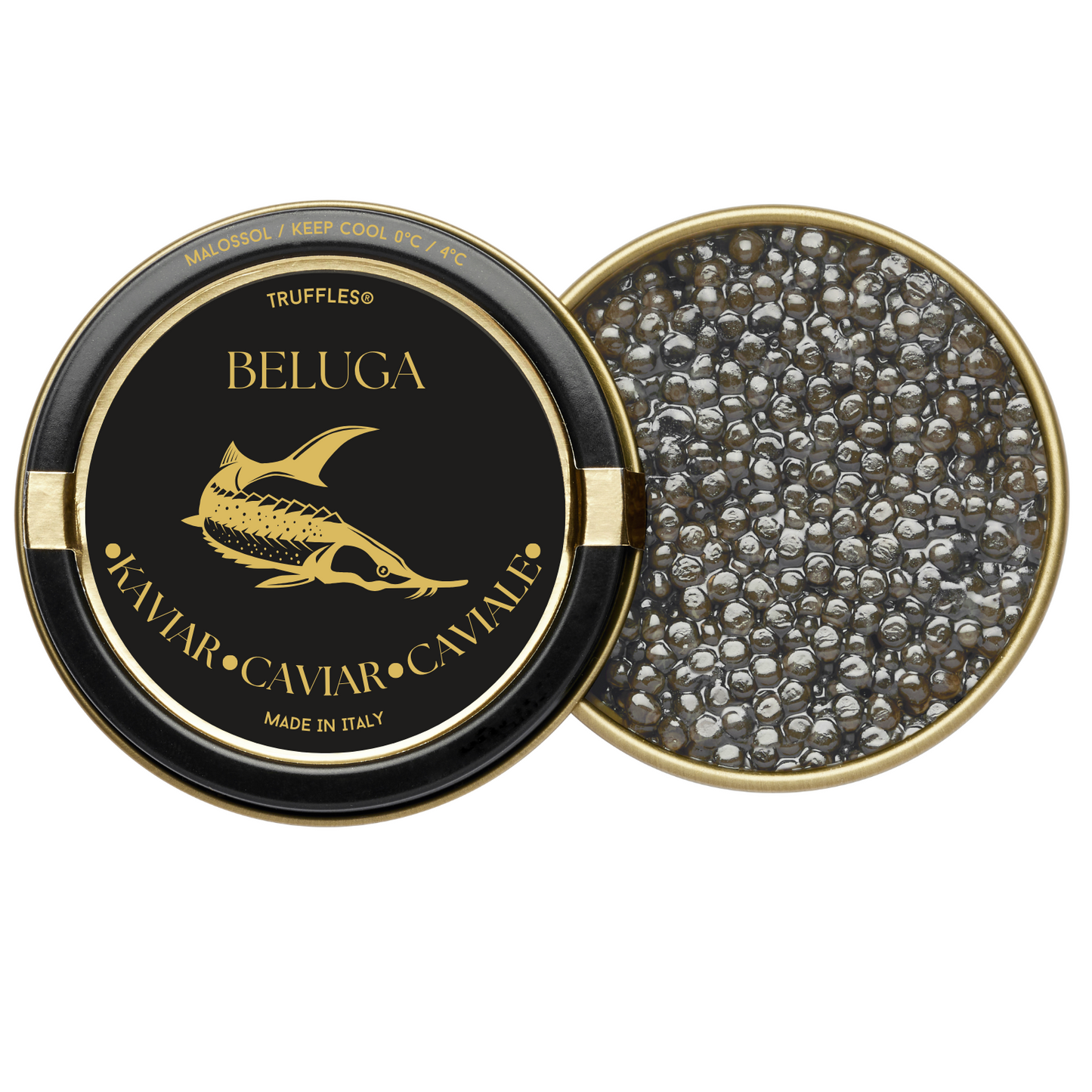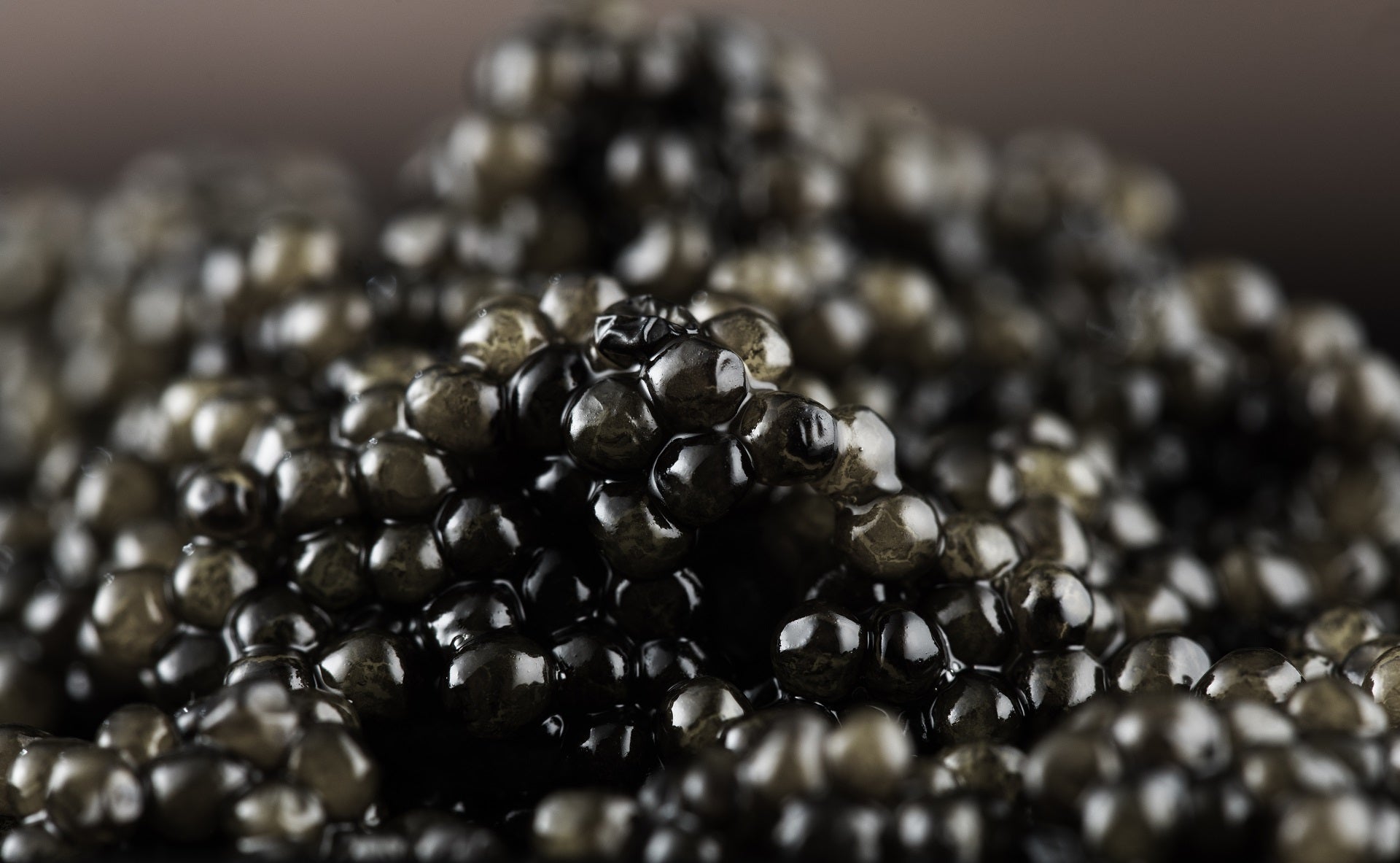
Caviar
Caviar is unfertilized fish eggs, also known as fish roe. It is a salty delicacy, served cold. True caviar comes from wild sturgeon, which belong to the Acipenseridae family. While the Caspian Sea and the Black Sea produced much of the world’s caviar for a long time, farm-produced caviar has now become popular as wild sturgeon populations have been depleted from overfishing.
Caviar is a natural delicacy. It is a nutritious food, packed with protein, amino acids, iron, and vitamin B12. Every step in getting caviar to the consumer is part of a delicate, time and labor-intensive process. The demand for real, sturgeon caviar is always greater than the supply.
People have been consuming sturgeon caviar for hundreds of years. Beginning in the 1800s, fish eggs were harvested and consumed from other fish species but none have achieved the status of true caviar. Of the 27 sturgeon species, almost all can be harvested for their eggs but beluga, sevruga, and osetra have long dominated the caviar world.
Beluga caviar. Beluga sturgeon, a large, prehistoric fish that can reach 15-feet-long and weigh nearly 3,000 pounds, produces the most sought after caviar. It is native to the Caspian Sea, which is bordered by Russia, Azerbaijan, Iran, Kazakhstan, and Turkmenistan. The caviar is rich, with no fishy taste at all and ranges in color from pearl grey to extremely dark, garnering it the moniker of black caviar.
Kaluga caviar. The Kaluga is a large, freshwater sturgeon whose caviar is said to closely match the taste of Beluga caviar. Kaluga eggs are smooth and have a lightly-salted buttery flavor.
Osetra caviar. Slightly smaller than beluga caviar, osetra sturgeon eggs are brown to golden in color. The lighter the eggs, the older the fish, and the more expensive the osetra caviar. It has a naturally salty sea-like taste.
Sevruga caviar. This caviar is from the eggs of three types of sturgeon from the Caspian Sea: sevruga, sterlet, and Siberian sturgeon. The eggs are small and grey, and one of the most in-demand types of caviar with a distinct, buttery flavor.
American caviar. In the nineteenth century, the United States was a leading producer of caviar. It has had a resurgence and American caviar has once again become popular. It is derived from fish such as lake sturgeon, wild Atlantic sturgeon, and white sturgeon.
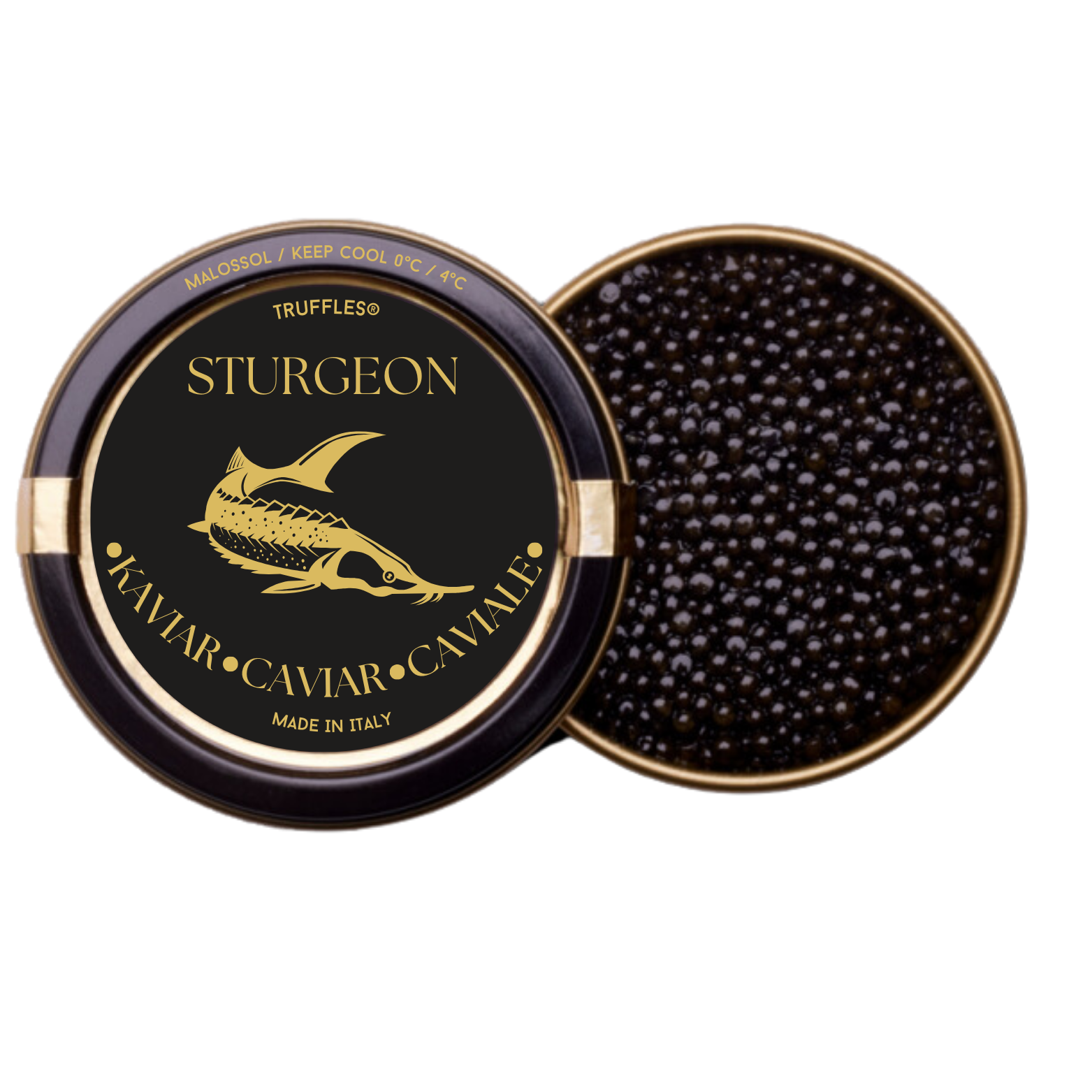
Italian-truffles
STURGEON CAVIAR
Share
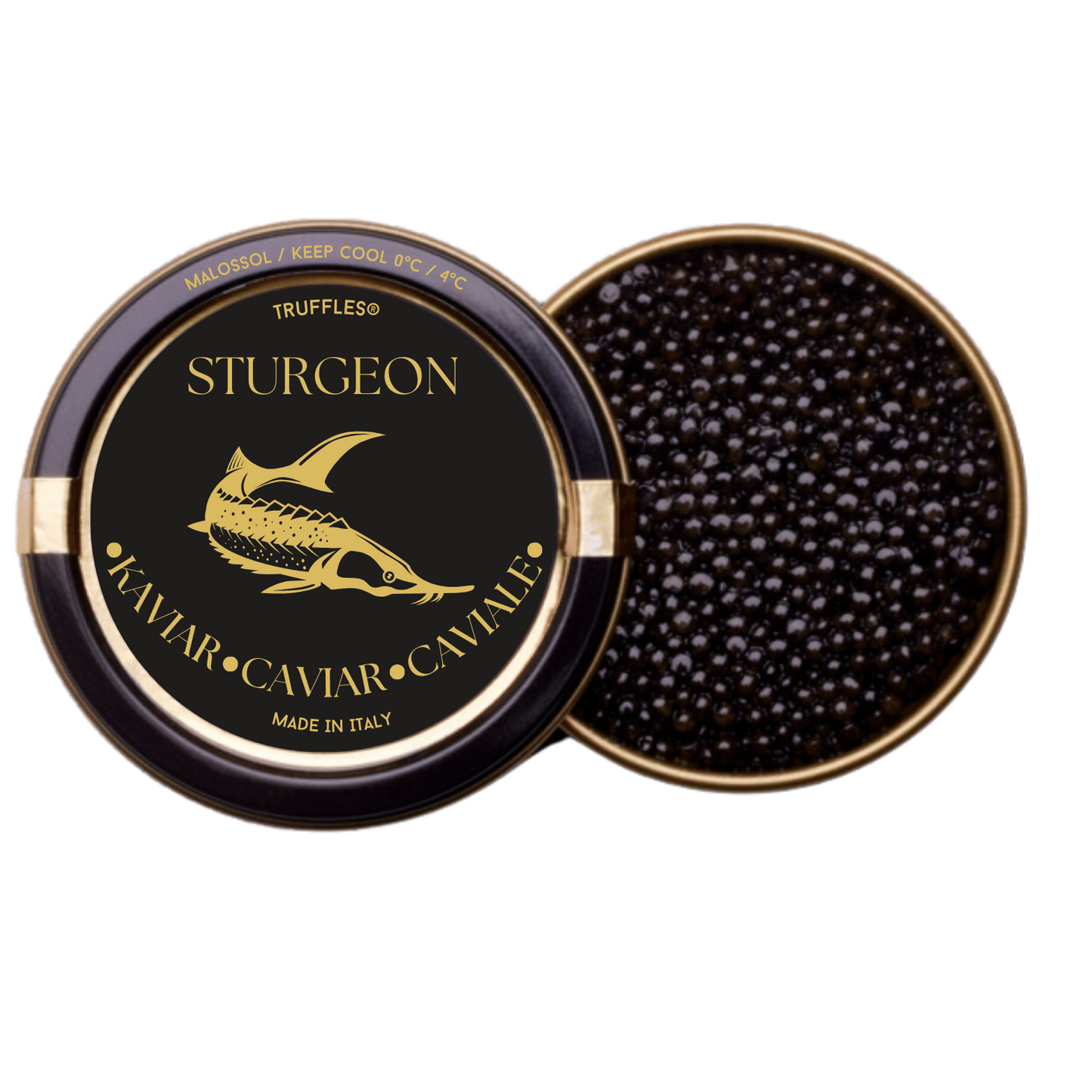
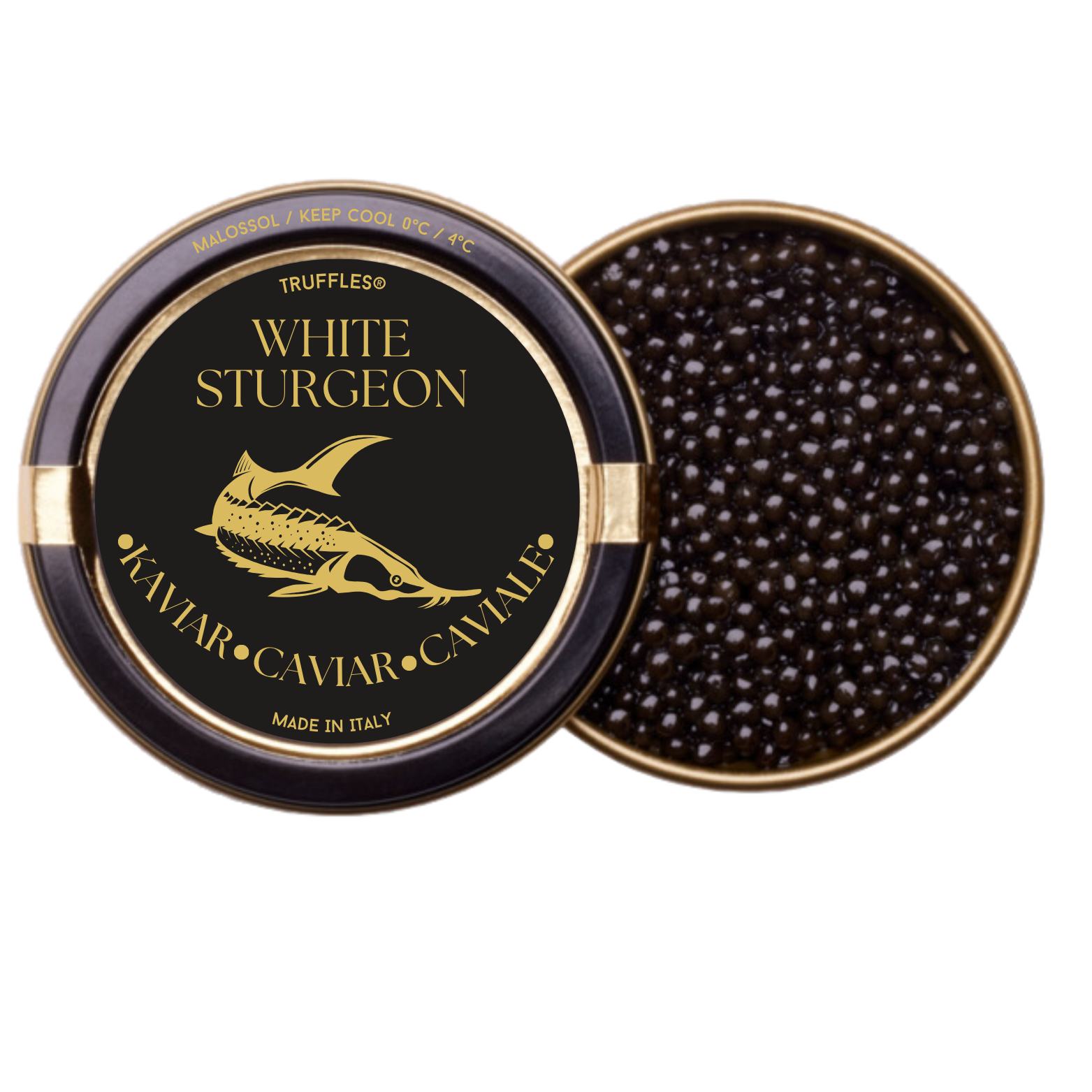
Italian-truffles
WHITE STURGEON CAVIAR
Share
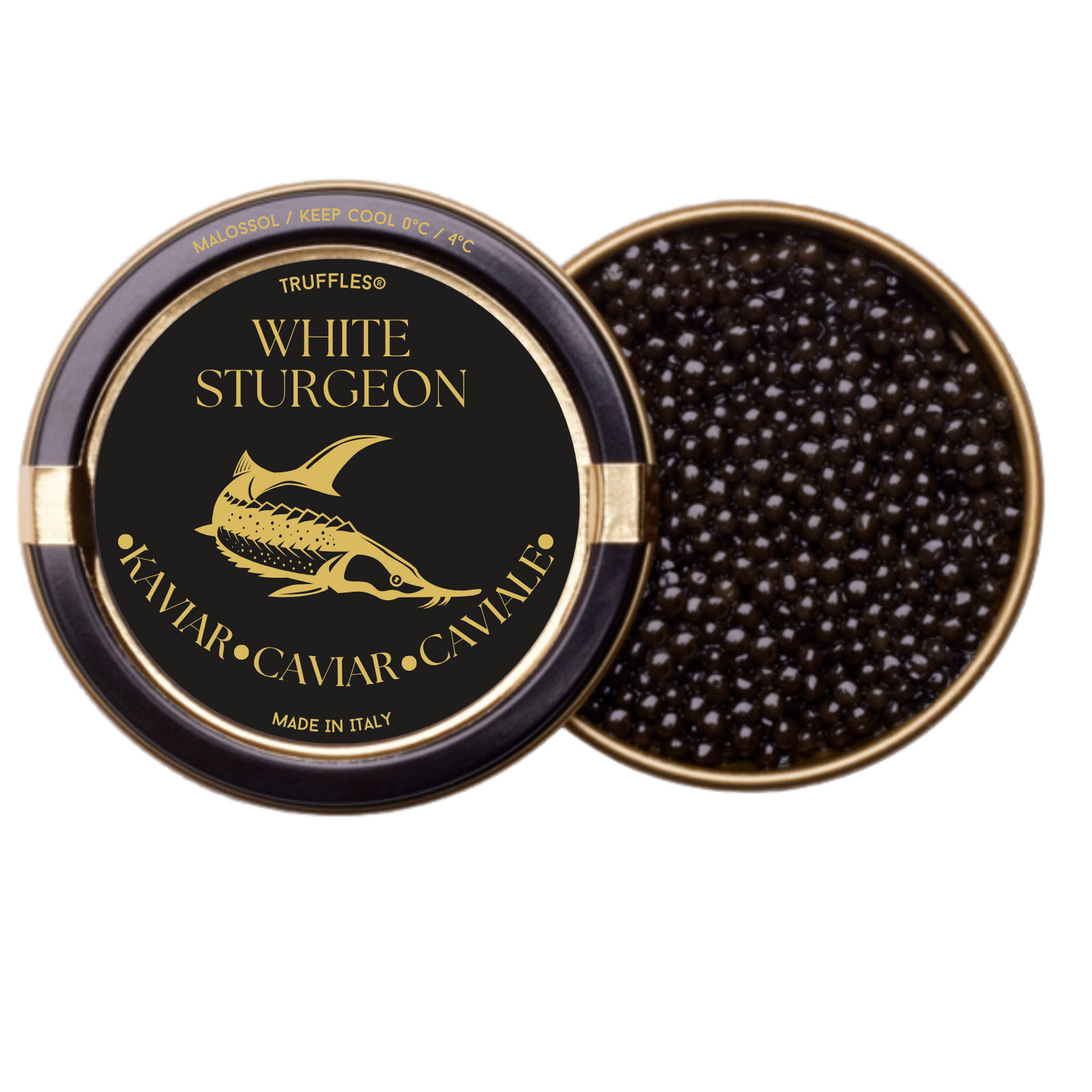
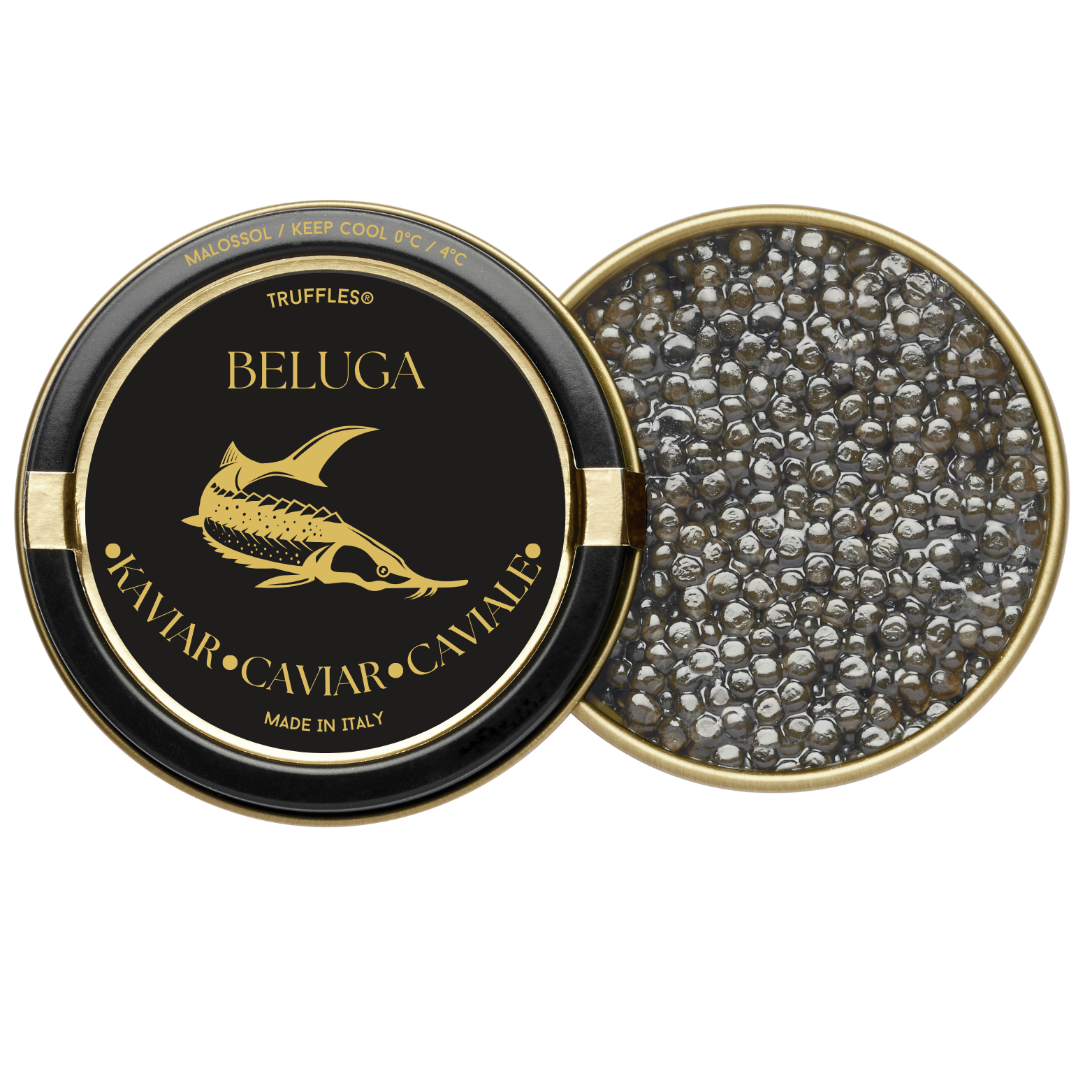
Italian-truffles
ITALIAN BELUGA CAVIAR
Share
